Which is the perfect South American country for you?

Fancy a trip to South America? Chris Moss provides an expert guide to the most fun-loving continent on Earth.
I am writing this in Lo de Roberto, one of my favourite old café-bars in Buenos Aires. I’m here on a pilgrimage to honour the memory of Carlos Gardel, sometimes called the Bing Crosby of tango (but a lot cooler), who released his first vinyl – the first tango song recorded for posterity – 100 years ago. Roberto’s is old-fashioned, unhurried and moody in a tanguero kind of way. My kind of place.
Argentina is where I lived from 1991 until 2001 and still feels like a second home. BA – as expats call it – has been through countless political ups and downs over the years, but seems almost stable compared with much of the planet, and even Brexit-bound Britain. Since I lived here its gastronomy has gone into orbit – even being a vegan is easy – and the fusty old caffs I used to quite like now have to compete with cooler bars serving single-estate flat whites. Add to these the craft brew pubs and wine bars, fancy design and fashion outlets, new cultural spaces (such as the CCK) and revamped museums (the MAMBA, or Buenos Aires Museum of Modern Art, is infinitely better after a £15 million renovation) and you have a city ever keener to rival Madrid, Paris and even New York in the lifestyle major league.
If BA is still my house, all of South America is the garden. I’m no longer a resident, but as a traveller, the continent – after dozens of visits, and stays in every country – continues to beguile me. At the most basic level, the landscapes are all the things Britain and, to an extent, Europe, simply cannot deliver. The Patagonian Andes, Amazonia, Ecuador’s cloud forests, the Pantanal: these are immense, globally important ecosystems where, mercifully, 500 years of colonial intrusion and modern “development” have not wiped out flora and fauna or destroyed the peace with overpopulation.
The human geography is equally appealing. The oft-stated clichés that Argentina is European, Chile a bit English or German, and Brazil’s big cities are in thrall to the USA don’t stand up to scrutiny. But as a British visitor, South America does have familiar mores, manners and appetites. From Italian cuisine in Buenos Aires to Lutheran churches in the north Patagonian lake districts to the opera house in Manaus in the heart of the Amazon jungle, this is a land that has looked – and still looks – to Europe for cultural and culinary inspiration. Because the backdrop is anything but European, the juxtaposition is scintillating. With the lingua franca of Spanish across all the nations except Brazil and the Guianas, travel is straightforward; but don’t expect homogeneity – the delights of South America often lie in the nuances, differences and imprecise borderlands of national character.
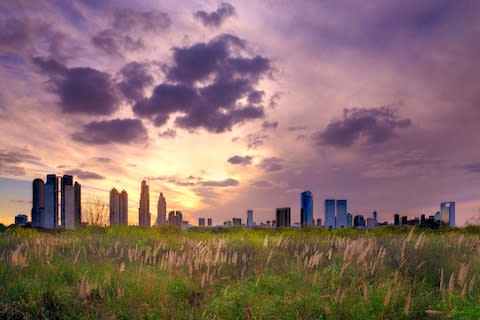
Each country has at least one USP. This current jaunt will also take me to Uruguay – home to Montevideo, the other, much less celebrated tangopolis, as well as a great place for a beach holiday on the Atlantic coast. The austral seas begin to warm up from late October, just as cool fronts and grey clouds sweep in to Sicily and southern Spain. A recent discovery for me was Paraguay. The least-visited, landlocked nation often gets left aside, yet it has species-rich tropical scrub and caiman-infested wetlands in the Chaco and a secret entrance into the Pantanal.
Brazil, Chile, Ecuador and Peru continue to be favourites with British travellers. Their well-known beaches, volcanoes, wildlife and archaeological sites – and the Galápagos Islands – have an undeniable universal appeal. All have upped the quality of their hotels; the general move towards eco-friendly lodges offering a menu of healthy active excursions, as well as delicious local food, is a winner on all fronts. Peru’s restaurant scene is unceasingly adventurous and now attracts the same international gastro-travellers who go to Paris and San Sebastián to collect Michelin stars.
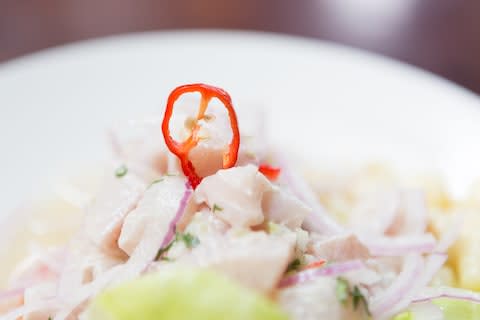
Colombia has become a mainstream destination. I’ve been four times in the past decade, and no visit has been alike. One involved serious salsa dancing in Cali – the capital of fun. A subsequent trip took me to that other infamous cartel city, Medellin, where I admired some of the most cutting-edge civic spaces in the Americas and went birding. Cartagena now hosts a regular Hay festival, and even the tiny English-speaking Caribbean island of Providencia has been in the travel pages.
La Paz, the capital of Bolivia, is finally happening. While the world-weary residents of European capitals lament gentrification, this one needed some to make it more than a stopover. The high-altitude city still dazzles visitors with its markets, mountainous setting and Aymara fiestas and parades, but now it’s also easy to get a decent cup of coffee, good wines – including Bolivia’s own excellent varietals – and dining as fine as that of Lima.
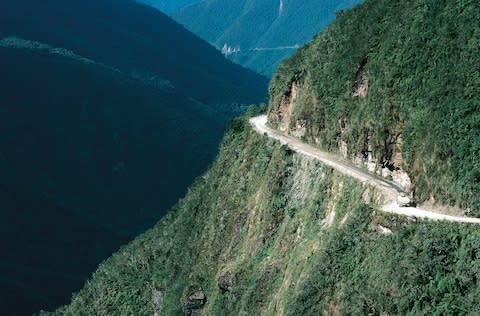
Until recently the Foreign and Commonwealth Office travel advice on Venezuela was to avoid all of it except the lush corridor of the Bolívar state that surrounds the towering Angel Falls. Depressingly, as of July 28 the Colombian border area is off-limits and the FCO advises against “all but non-essential travel” to the rest of the country. Caracas is in perpetual turmoil and until things improve, neighbouring Guyana is a much better option to ogle comparable waterfalls, landscapes and wildlife.
While the Caribbean sets out on the long road to recovery after Irma and José, and southern Mexico prays there are no more earthquakes, South America beckons with relative calm and unlimited colour. The weather can be dramatic in the Andes and the wet seasons in the green riverine heart of the continent rain down their own challenges. But tropical cyclones almost always pass South America by. As spring bursts in Buenos Aires and the jacaranda trees turn violet, the most welcoming, warm-hearted, fun-loving continent on earth reopens for business.
I’ve been to lots of it but I’ve not by any means seen the whole show. If it’s your first visit, I’m jealous. If you’re planning an epic overland odyssey,
I’m also jealous. If you’re bent on exploring an uncharted corner of the Bolivian Yungas, or taking a small plane to Robinson Crusoe island, I’m really jealous. But always in a good way – Latinos, even Anglo-Latinos, don’t bear grudges. So ¡feliz viaje! And I hope to bump into you one of these days in a moody bar in some wondrous corner of South America.
Argentina
Indulge in supersized steaks; burn them off on the dance floor.
Because it’s at the bottom of a continent largely off the UK news radar, it’s easy to forget Argentina is the eighth biggest country in the world. Any trip has to be planned bearing this in mind. If it’s your first time, it might be best to land in Buenos Aires, arguably still South America’s most romantic city, and loiter a few days to take in its dreamy old cafes, lively steakhouses, an opera (season: March-Dec) or ballet (April-Dec) at the Teatro Colón, and some kind of tango experience. A “milonga” is a ballroom night, ideal if you can already dance or just want to watch the experts. From Feb 14 2018, Norwegian Airlines will be operating flights from Gatwick to Buenos Aires four times a week; the first plane will no doubt be filled with Valentiners heading there to gorge on dulce de leche ice cream and the aforementioned romance.
A 90-minute flight north-east gets you to Posadas, ideal for a road trip through the Jesuit mission at San Ignacio Miní ending up at the Iguazú Falls, the most spectacular waterfalls in the Americas. North-west lie Salta and Jujuy, two Andean cities perfect for trips through the spectacular Humahuaca and Rio Conchas ravines; at Cafayate is a winemaking oasis smaller and more convivial than the more famous Mendoza wine region.

The absolute must-see is southern Patagonia: most people head for the Perito Moreno glacier, but the whole of the Los Glaciares National Park is a wonderland of snow-capped peaks, shifting ice fields and turquoise lakes.
With good, empty roads – only 44 million people live in this huge nation – a wide range of hotels and stylish estancias (ranches), and the best English speakers in the Hispanic world, Argentina is an easy place to introduce yourself to South America – with a European lilt.
Don’t miss: Buenos Aires, Iguazú Falls, Los Glaciares national park, the Andean north-west.
How to do it: Journey Latin America (020 8747 8315; journeylatinamerica.co.uk) has a 12-day group tour starting in the Andes in Chile and making stops in Buenos Aires, Mendoza, Salta, Cafayate, and Iguazú – covering the wines of both main regions and the ravines of the North-west. From £3,448 including flights, transfers, excursions and most meals. Solo travellers willing to share can avoid paying a single supplement. Naturetrek (01962 733051, naturetrek.co.uk) has a 15-day wildlife group tour to Argentine Patagonia, covering the southern right whales and penguins near Peninsula Valdés, condors of Los Glaciares National Park and giant woodpeckers of Tierra del Fuego. From £5,995 including flights. Next departure Nov 19.
Bolivia
The beating heart – and racing pulse – of indigenous Latin America
The most otherworldly landscapes, the most intact indigenous cultures, the quirkiest capital city – and the thinnest air. Yep, to visit Bolivia, you’ll need your lungs. La Paz is getting revamped. It’s still a wild place full of clamorous markets and in a spectacular setting in a bowl at 11,942ft above sea level, at the foot of the mighty Illimani mountain. But cool hotels, such as the Atix and Casa Grande in Zona Sur and the new Altu Qala in the historic centre (opening in December), as well as pleasant cafés (the Writer’s Coffee is in the gorgeous old Gisbert bookshop), daring restaurants (vegan Ali Pacha is outstanding) and, more subtly, a sense of self-esteem after 19 years of government by Evo Morales, the indigenous Aymara president, make the city enthralling. A cheap, fast, frequent network of new cable-car lines allows visitors to see the densely populated sprawl from above.

The country’s other star attractions also lie at high altitude, notably Potosí, the fascinating mining town where the Spanish colony extracted the silver to fund its empire, and the Salar de Uyuni, the biggest salt flat in the world. The Palacio de Sal hotel, built entirely from salt, is still going strong, but stylish Airstream campers – with private driver, guide and chef – can be towed to remote sections of the salt flat in the dry season (April to mid-November).
Forty miles (65km) west of La Paz – passing through El Alto, a sprawling desert city full of garish “New Andean” buildings by architect Freddy Mamani – is Lake Titicaca, the bedazzling blue eye of the Andes. The loveliest place to stay is Isla de Sol, an unspoilt, car-free island that is home to a thriving community of farmers; walk the same trails as livestock to get around, and ogle sublime sunrises and sunsets, as you’d expect of an island where, the natives insist, the sun was born.

In the south, around Tarija, close to the Argentine border, are much lower, more fertile slopes and valleys ideal for raising cattle – the steaks are as good as in Buenos Aires – and growing wine; a petit verdot from the Campos de Solana winery won a gold medal in May.
October 9 2017 marks 50 years since the death of Ernesto “Che” Guevara. Several countries lay claim to a “Che Trail”, but he died in La Higuera in remote central Bolivia. The intrepid can trace his last steps and visit museums celebrating the life of the Argentine revolutionary leader.
Don’t miss: La Paz, Potosí, Salar de Uyuni, Lake Titicaca.
How to do it: Aracari (020 7097 1750, aracari.com) has a 10-day Salt Flats and Silver itinerary with stays at Atix in La Paz, time in the Salar, the Eduardo Avaroa Andean Fauna reserve, Sucre, Potosí and Titicaca. From £4,270, excluding international flights.
Brazil
Believe the hype: the world’s most seductive nation and beaches
With the World Cup and Olympic Games out of the way, Brazil is back to doing what it does best: showing off spectacular wildlife, dancing to pulsating music and hitting the beaches. The building boom for both means supply outstrips demand, pushing prices down.
Despite competition from Peru and Uruguay, Brazil remains South America’s beach central. A new Azul flight from Recife to arguably the hippest coastal spot on the Atlantic, Jericoacoara, means visitors can wake up in the protected Fernando de Noronha archipelago and be in “Jeri” after lunch. The openings of Essenza and Essenza Dune add two to the wide choice of upscale hotels.

Rio de Janeiro continues to be the most enticing major city in South America; the collision of modern architecture, subtropical greenery and glorious sandy bays is a world one-off. The new Emiliano hotel on Copacabana shows the former capital wants to keep up with strutting São Paulo in the property stakes. The spectacular 33-storey cylindrical Hotel Nacional in São Conrado – the work of the late, great Brasilia architect Oscar Niemeyer – recently reopened as a Gran Meliá. It’s an imposing modernist masterpiece as well as a great-value five-star hotel.

Street food is the thing to eat in Rio, from tapioca – served with bananas or chicken – to grilled cheese kebabs and pasties filled with palm hearts. To get in shape afterwards, do a city walk: the new 112-mile (180km) Transcarioca Trail, from Barra de Guaraiba to Morro da Urca at the base of Sugar Loaf Mountain, claims to be the region’s first major urban hiking route.
South of Rio, the Costa Verde makes for a fun week-long driving holiday, via deserted beaches and the car-free island of Ilha Grande, all the way to Santos – where Pelé and Neymar were discovered.
Other standout points on the massive Brazil map include cultural capital Salvador, also surrounded by beaches; festive, French-influenced São Luis (close to the desert-like dunes and lagoons of the Lençóis Maranhenses); well-preserved colonial town Olinda and the Amazonian metropolises of Belém and Manaus. Cheap riverboats and posh cruises ply the huge river between the latter two.

Brazil’s Pantanal and Amazon regions are at least as alluring as these urban draws. The former presents visitors with the best chance of seeing South America’s Big Five (jaguar, tapir, anteater, maned wolf and giant otter) as well as capybara and caiman. Comfortable small cruise boats are used to explore the Rio Negro, a major tributary of the Amazon that teems with flora and fauna; up the Amazon itself are isolated research centres and lodges, where rare monkeys and pink dolphins can be spotted.
Political instability, economic decline and security issues have returned to Brazil. Travellers should be alert to protests/marches and avoid outlying city areas and late-night walking across quiet districts. The country is considered to have a “moderate risk” for Zika virus transmission; pregnant women are advised to postpone non-essential travel.
Don’t miss: Rio de Janeiro and the Costa Verde, the Upper Amazon, The Pananal, Olinda, Brasilia. Note: the Rio Carnival falls on Feb 9-14. Avoid the city then if you want to sleep/can’t dance.
How to do it: Black Tomato (0207 426 9888, blacktomato.com) can organise a luxe 12-night beach immersion, with stays at the Hotel Fasano on Ipanema, a chopper ride to Buzios to stay at the Insolito Boutique Hotel & Spa, a private boat trip to a deserted island, wrapping up with a flight to Florianopolis to transfer to the exclusive Ponta dos Ganchos resort. £5,799 excluding flights. The South America Specialists (01525 306555, thesouthamericaspecialists.com) has teamed up with wildlife photographer William Burrard-Lucas for its seven-night photographic trip to the Pantanal, including accommodation on the Rio Mutum expedition boat and at Caiman Ecological Refuge. From £3,708pp.
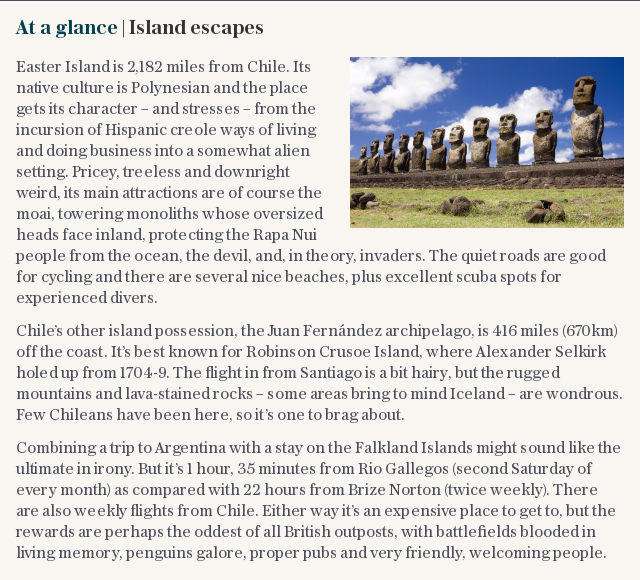
Chile
Scores of climates, ecosystems and topographies in a single country
Long, skinny Chile is the best self-drive destination. The Pan-American Highway (Route 5) runs from the Peruvian border to Puerto Montt in the south, linking up wonderful offbeat cities such as Iquique, La Serena and Valdivia with the capital, Santiago, and its more arty, attractive sister city, Valparaíso. Choose your section – say, Atacama for the desert and stargazing, or the Lake District for great walking – or drive the whole thing in a couple of weeks. Side roads lead to the volcanoes and high plains along the Bolivian border or deep into the Elqui valley, where the national liquor pisco is distilled and where it never seems to rain.
A second major highway, Route 7, from Puerto Montt to Villa O’Higgins, opens up the Aisén region, the cold, surreally green General Carrera lake and the Río Baker, where fly-fishers can fill their boots.

The Chilean government says it will extend this so-called southern Highway further south, linking 17 national parks – including more than a million acres of new parkland donated by conservationist Kris Tompkins to the Chilean government in March.
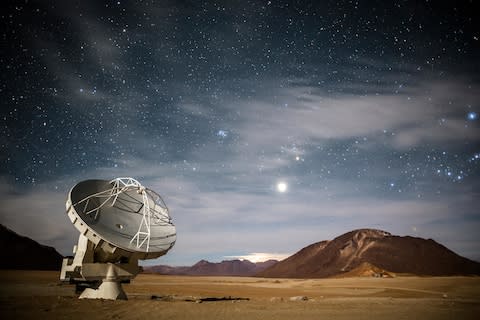
As well as all this natural wonder, some striking hotels have opened. The new Awa, on Lago Llanquihue, has given the Lake District its first landmark property. On the serene archipelago of Chiloé, the Tierra Hotels group is doubling the size of its fabulous Tierra Chiloé adventure lodge – due to open on October 1. And the Mandarin Oriental group is renovating the Hotel Santiago in the capital’s Las Condes upscale district. In mid-January, Pope Francis will visit Santiago, Temuco and Iquique – hotels will be rammed and streets impassable.
Don’t miss: Valparaíso, the Atacama Desert, Chiloé, Aisén.
How to do it: Audley Travel’s (01993 838640, audleytravel.com) 13-day Aisén Region Uncovered is a self-drive holiday on the southern Highway, with rafting or fishing on the Baker and horse riding or hiking through the wonderful national parks. From £3,585pp, including flights and excursions.
Colombia
Hips might not lie, but the local firewater does – everyone dances superbly after about five glasses
Stable politics, a direct flight from Heathrow, safe major cities – including capital Bogotá and former cartel hubs Cali and Medellin – have turned this once off-limits country into a holiday destination. With three Andean ranges, Pacific and Caribbean coasts and huge swathes of wilderness, Colombia offers more than the map suggests.
Cali is hot and sweaty, as befits the undisputed “capital of salsa”; it’s also a place to see, and hear, Afro-Colombian culture. Sober Medellin is impressive for its modern architecture, Botero sculptures and the hip district of Parque Lleras, and also a major centre for fashion and design. The verdant, hilly “Coffee Triangle” – formed by the cities of Armenia, Manizales and Pereira – is easy on the eye, great for tasting the bean and seeing how it is cultivated, and the home of Colombian rural traditions. Paso fino horses dance around the cobbled streets of quaint Jardín, and accommodation is in old coffee haciendas, with swoon-inducing views of the greenest green. Sick of coffee? The opening of the Colombian Chocolate Club in the heart of Bogotá offers choc-tasting for all the family.

Cartagena de Indias is so popular that it risks becoming the next Dubrovnik – the city is on all cruise ships’ itineraries these days. But if you get up early and walk the bulwarks and back streets while it’s quiet and cool, you’ll fall in love. It’s a short hop to Providencia: this English-speaking island has pirate history and looks as the Antilles looked before the jets and jet-setters arrived.
Don’t miss: Cartagena de Indias, the Coffee Triangle, Providencia, Cali.
How to do it: Miraviva (020 7186 1111, miravivatravel.com) offers a seven-night New Colombia package with three nights at Four Seasons Casa Medina in Bogota, two at Monasterio San Augustin, and two at Movich Hotel in Cali, from £2,833pp based on two travelling, including flights, tours and transfers. Journey Latin America’s (020 8747 8315; journeylatinamerica.co.uk) new 14-day Chachalaca group tour highlights colonial heritage and coffee, visiting Bogotá, Medellin, Cartagena and well-preserved smaller towns including Villa de Leyva and Filandia. From £3,745, includes flights, private transfers, breakfast, excursions and hotels. First departure: December 2.

Ecuador and the Galapagos Islands
Arguably the origin of The Origin of Species – and the place to see them
In August, Quito hosted Sal Quiteña, its first food festival, complementing the year-round roster of arts and music events. Perhaps the capital most devoted to tourism, the competitive streak hasn’t taken away its charm. An odd mix of indigenous markets, trendy hostels and bars, and dashing social-cum-artistic statements like the Capilla del Hombre (Chapel of Man), it’s a bustling little city. A short drive takes you to the Avenue of the Volcanoes – soaring crater-topped summits, some active, some dormant – which in turn leads into the Amazon, or to the Cloud Forest of the globally important Chocó-Darien bioregion. Here, glass-walled, gloriously isolated Mashpi Lodge continues to expand its activities with the Mashpi Centre, where guests get to work alongside resident biologists on surveys of butterflies, amphibians, reptiles, bees and wasps.

From Quito, it’s a 90-minute flight – stopping at steamy Guayaquil – to Isla Baltra in the Galápagos. Sensitively managed, the islands are best accessed on a small ship or yacht cruise. Low-impact trails and swimming sites allow close contact with land and marine iguanas, giant tortoises, green sea turtles, flightless cormorants and reef and hammerhead sharks.
Those who want a slower, more settled experience can stay over at properties such as Scalesia Lodge on Isla Isabela, a luxurious safari-style tent resort set in 40 acres of coastal forest.
On September 4, the La Cumbre volcano on uninhabited Fernandina blew its top for the first time in eight years. This doesn’t affect travel, except that cruise passengers may catch sight of further eruptions.
Don’t miss: Quito, Avenue of the Volcanoes, Galápagos Islands.
How to do it: Exodus (020 8772 3936, exodus.co.uk) has a 15-day Avenue of the Volcanoes group tour that combines five days’ walking, including a trek in the highlands of the Cotacachi-Cayapas Reserve, and five days’ ice-climbing skills – suitable for beginners. Departure: Nov 18; from £3,049, incl flights, accommodation, most food. Wexas Travel’s (020 7591 0610, wexas.com) 13-day tailor-made journey starts in Quito, transferring to the Galápagos Islands to embark on a yacht cruise. As well as the wildlife, there are stays at the Finch Bay Hotel on Isla Santa Cruz and Scalesia Lodge. From £4,885pp including international flights.

Guyana, Suriname and French Guiana
Hardly anyone in South America has been – join the exclusive travel club
The undiscovered countries of the Americas, the three “Guianas” are small nations tucked in to a corner between Venezuela and Brazil, with Caribbean coasts to the north, and the southern swathes delimited by the Guiana Shield, sometimes dubbed “the greenhouse of the world” for its unspoilt, species-rich jungles.
Guyana, formerly a British colony, has a rough and ready capital, Georgetown, and some of the best jungle retreats in the region in the Atta Rainforest Lodge and Iwokrama River Lodge. With Venezuela off-limits due to crime and instability, waterfall-baggers should visit the Kaieteur Falls – the world’s tallest single-drop fall, in its namesake national park.

Suriname was retained by the Netherlands in exchange for Britain taking control of New Amsterdam – aka Manhattan – back in 1667. OK, Britain won that one. But, while the greenery on the US islet has been razed to the ground, Suriname is a tantalisingly wild and beautiful land. Capital Paramaribo is immaculately preserved, with Unesco-listed Dutch colonial, mainly wooden, civic buildings, hip coffee shops and a lovely riverside dining area. Inland is a vast jungle and labyrinthine network of rivers.
The most beguiling of the three is probably Guyane/French Guiana, a French Overseas Department, with a sizeable Foreign Legion (who do their jungle training here) and the Guiana Space Centre north-west of Kourou.
Cayenne, the capital, is a romantic little city and enjoys direct connections to Paris Orly. The real highlights of French Guiana, though, take the form of “dark tourism”: the atmospheric ruins of Saint-Laurent-du-Maroni, the arrival port for prisoners, and the grimly thrilling penal colony of the Îles du Salut, the most famous of which is Devil’s Island.
Don’t miss: Cayenne, Devil’s Island (in French Guiana); jungle stays and wildlife safaris (in Guyana); Paramaribo (in Suriname).
How to do it: Explore’s (01252 883 758, explore.co.uk) new 12-day Backwaters of Guyana Expedition includes a seven-day journey paddling dugout canoes on Guyana’s Burro Burro river, spotting macaws, otters, tapir and agouti, and sleeping in hammocks in the jungle. From £4,179 incl flights. Steppes Travel (03331 306 569, steppestravel.com) offers a 15-day itinerary taking in Guyana, French Guiana and Suriname from £7,495pp based on two sharing including accommodation on a B&B basis, tours, transfers and international flights. This trip takes in the wildlife, Amerindian culture and colonial history of the three Guianas and includes a visit to the space centre.
Paraguay
Landlocked, low-lying, steamy and strange – the call of the wild for those who want to get off the tourist trail
South America’s most unsung destination can’t offer the lush landscapes, luxury lodges or modern infrastructure of its larger neighbours. What it does have is authenticity. Travel from the stirring Jesuit Missions of the south via Asunción and on into the Chaco, the low-lying wilderness west of the capital, and chances are you’ll not meet another gringo.

The missions of La Santísima Trinidad de Paraná and Jesús de Tavarangue were inscribed as Unesco World Heritage sites back in 1993. Though only vestiges remain, the red-brick architecture, roofless church naves and humid, forested setting evoke the daring, ultimately doomed, Jesuit dream of bringing the Guaraní natives to Jesus and saving them from oppression. Just to the north, Santa María de Fe is a pretty, peaceful hamlet that gives visitors a living impression of how life might have been under the priests. The central plaza has preserved its character and a small museum of carved saints is testament to the artisanal skills of the Guaraní.
Asunción is the opposite of pretty, but it does have pleasant avenues and two excellent museums: the Museo del Barro, which brings together centuries of native and colonial art and craft; and the volunteer-run Museo de las Memorias, reminding Paraguayans of the exploits of former dictator Alfredo Stroessner. Nearby Lake Ypacaraí is a tranquil place to spend a day, while – this being Paraguay – seeing the hotel where proto-Nazi Bernhard Förster (husband to Elisabeth Nietzsche) hatched his insane plans for an Aryan settlement, got drunk and died.
North and west of the capital lie two immense wildernesses. The Chaco is an alluvial depression covered in scrubby forest that will delight birders and also hosts a Mennonite outpost. The Paraguayan Panatanal is a wildlife-rich wetlands, best reached by boat (very slowly) or small plane.
Don’t miss: Jesuit Missions, Santa María de Fe, the Chaco, Asunción.
How to do it: Chimu Adventures (020 7403 8265, chimuadventures.com) can arrange a six-day guided taster tour of Paraguay, including Asunción, Yaguarón, with its baroque church, Jesuit sites, Monday waterfalls and South America’s largest dam – Itaipu. From £675pp; flights not included.
Peru
The seat of two great empires: drink and dine like an Inca, sleep and hike like a conquistador
It’s no longer controversial to say Machu Picchu is not Peru’s most exciting destination. The Inca citadel remains one of the wonders of the world – but getting there is, to be honest, rather more exciting.
The opening of the Explora Sacred Valley in Urquillos has given visitors to Peru the best of all excuses to loiter in the region. The hotel offers guests a menu of 20 “explorations”, including hikes, bike rides and drives – many involving Inca sites and, because the valley is still the heartland of the indigenous Quechua people, cultural encounters. The continued expansion of the luxury hotel scene in Urubamba (the valley’s commercial hub) and the plan by Lima’s top chef, Virgilio Martínez, to open a restaurant beside the Moray ruins looks set to make the valley ever more popular.
It’s worth reasserting that Peru’s capital is the undisputed culinary powerhouse of South America: for daring, for vitality and for honouring their indigenous forebears’ produce and dishes, Lima’s chefs stand alone. Stops at pioneer Astrid y Gastón, plus El Mercado, Maido, Malabar and Rafael – as well as Martínez’s top-rated Central – are highly recommended. Book well before you fly.
Alternative ancient sites are luring hikers and history-lovers away from Machu Picchu. In April 2017, a cable car opened between the village of Nuevo Tingo and the pre-Inca ruins of Kuelap in the southern Amazonas region. The site was previously only accessible via a steep 5.6 mile (9km) drive or four-hour hike up unpaved roads. The 20-minute ride opens up an impressive walled settlement built by the Chachapoyas in the sixth century.
Home to about 1,800 bird species – including 107 endemic species – Peru is realising its potential as a birding holiday destination. Lodges such as the family-owned Tambo Blanquillo in Manú National Park, north of Cusco, and Tambopata Research Centre and the new Inkaterra Guides Field Station – accessed via Puerto Maldonado – employ experts and offer guests a combination of up-close nature and comfort.
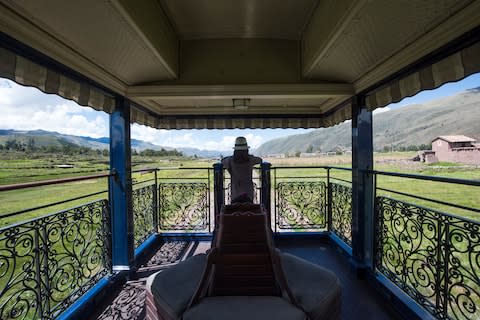
For train buffs, the new Belmond Andean Explorer is a luxury sleeper supplementing the same firm’s Hiram Bingham Cusco-to-Machu Picchu Pullman-style service. Well-heeled travellers can now go to Puno and Lake Titicaca as well as Cusco, feasting on fine food and staying in double-bed cabins; the train even has a spa car.
The Pope visits Peru from Jan 18-21, and is scheduled to say Mass in Lima, Trujillo and Puerto Maldonado.
And Paddington 2 is released on Nov 10, so expect a resurgence of interest in marmalade-eating bears.
Don’t miss: Sacred Valley, Kuelap, Lima, Manú National Park, Cusco.
How to do it: Martin Randall’s (020 8742 3355, martinrandall.com) 16-day Andean Heartland guided group tour of Moche, Chimú and Chachapoya sites also includes on-site stays at Machu Picchu. The lecturer, David Beresford-Jones, is a fellow of the McDonald Institute for Archaeological Research at the University of Cambridge. Sept 6-21 2018. Llama Travel’s (020 7263 3000, llamatravel.co.uk) 13-day Incas & Conquistadors of Peru tour visits Lima, Cusco and Titicaca and includes an overnight trip on the Belmond Andean Explorer. From £1,659 per person including flights, hotels and transfers.
Uruguay
See a whole country in a week, or perhaps not – this is, after all, South America’s answer to slow travel
This diminutive nation has been in the news lately for its laconic ex-president and liberal values – including legal pot-smoking. Uruguayans have none of the swagger of their neighbours, and are more likely to be drinking mate tea than dancing samba.
Capital Montevideo is an emerging destination. Its Sofitel-run Carrasco hotel, summer carnival (Jan-Feb), atmospheric port market and Afro-Latin population and laid-back pace make it feel very different from Buenos Aires – across the river, and connected by fast ferry. Several wine regions lie close to the city and around the smaller towns of Unesco-listed Colonia del Sacramento and Carmelo upriver – with vintage cars with drivers for hire so you can have a drink and take in the bucolic scenery.
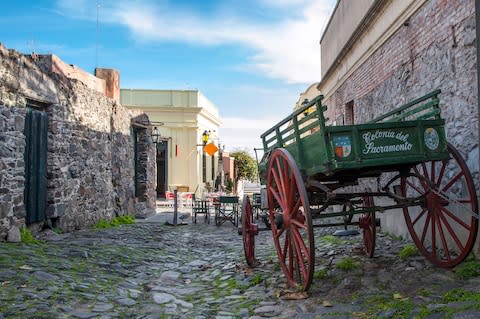
Uruguayans are justly proud of their farming and cattle-rearing history. Inland from the River Plate it’s easy to get to an estancia for horse riding, a barbecue and birding on the pampas. The wreckage of the Fray Bentos meat factory was made into a Unesco World Industrial Heritage site in 2015.
The Atlantic coast is overloaded with ambitious boutique hotels, fad-hungry restaurants and posers’ pads. Bypass Punta del Este (mobbed by Argentines late Dec-Mar) and aim for smart but attractive José Ignacio, or continue north to mellower La Paloma and Cabo Polonio (the latter is great for camping).
Don’t miss: Montevideo, La Paloma and the northern Atlantic coast, Fray Bentos, Uruguayan Pampas.
How to do it: Last Frontiers’ (01296 653000; lastfrontiers.com) 10-day Classic Uruguay itinerary combines Montevideo, Colonia, a beach posada in José Ignacio and Fray Bentos. £2,440 including flights and B&B.
For more travel ideas and more than 275 tour operators and service providers, see the website of the Latin American Travel Association (lata.travel).


